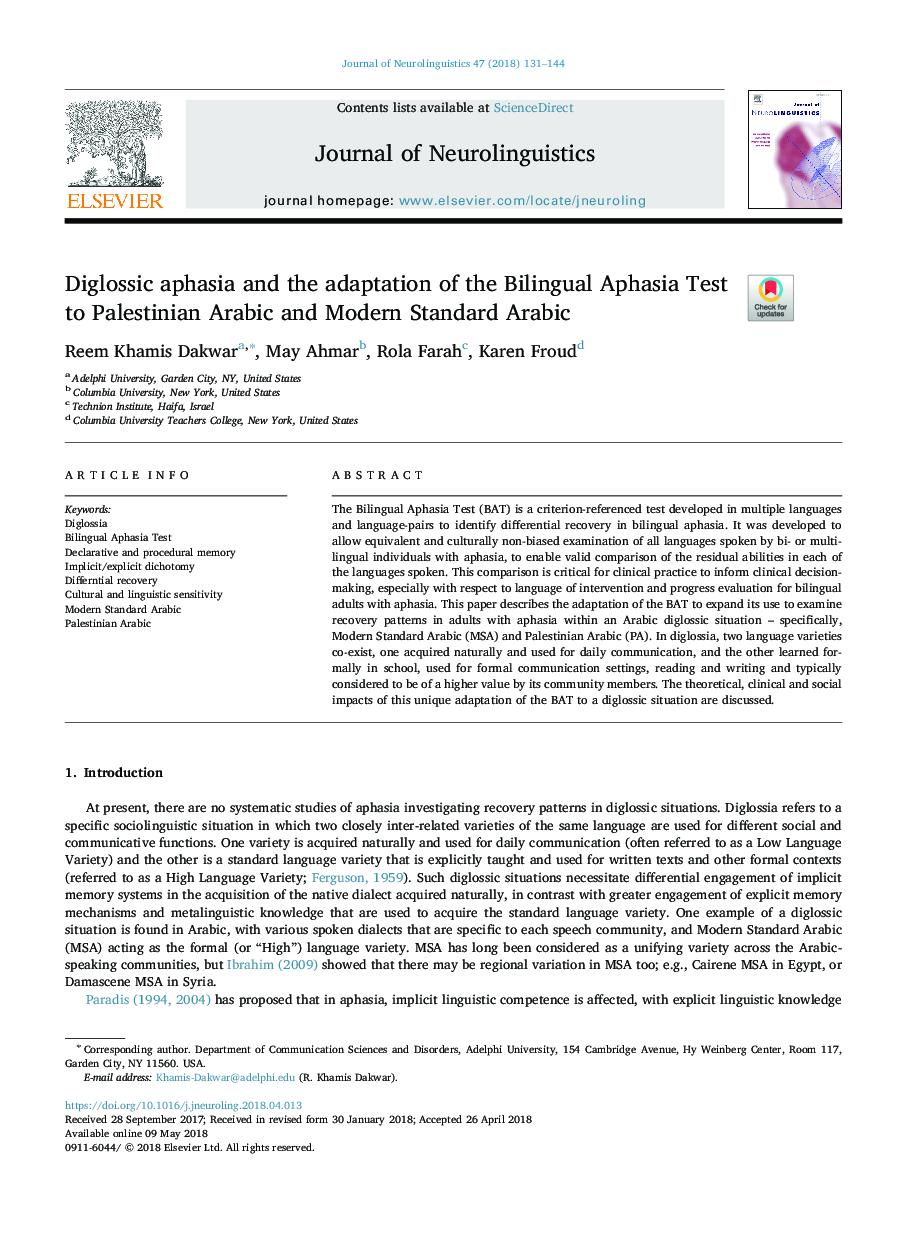| Article ID | Journal | Published Year | Pages | File Type |
|---|---|---|---|---|
| 7268746 | Journal of Neurolinguistics | 2018 | 14 Pages |
Abstract
The Bilingual Aphasia Test (BAT) is a criterion-referenced test developed in multiple languages and language-pairs to identify differential recovery in bilingual aphasia. It was developed to allow equivalent and culturally non-biased examination of all languages spoken by bi- or multi-lingual individuals with aphasia, to enable valid comparison of the residual abilities in each of the languages spoken. This comparison is critical for clinical practice to inform clinical decision-making, especially with respect to language of intervention and progress evaluation for bilingual adults with aphasia. This paper describes the adaptation of the BAT to expand its use to examine recovery patterns in adults with aphasia within an Arabic diglossic situation - specifically, Modern Standard Arabic (MSA) and Palestinian Arabic (PA). In diglossia, two language varieties co-exist, one acquired naturally and used for daily communication, and the other learned formally in school, used for formal communication settings, reading and writing and typically considered to be of a higher value by its community members. The theoretical, clinical and social impacts of this unique adaptation of the BAT to a diglossic situation are discussed.
Keywords
Related Topics
Life Sciences
Neuroscience
Cognitive Neuroscience
Authors
Reem Khamis Dakwar, May Ahmar, Rola Farah, Karen Froud,
